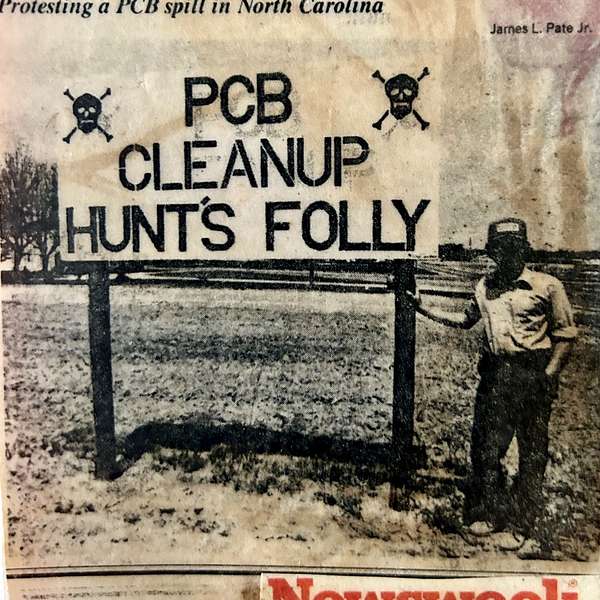
Our Road to Walk: Then and Now
Our Road to Walk: Then and Now
Our Road: Then -- E32: The Dastardly Deed: What Was Behind the PCB Crime?
The above photo of T. Mitchell Langdon, a Johnston County, North Carolina farmer, was published in Newsweek magazine on September 6, 1982, with an article titled "Toxic Time Bomb." The photo was taken in 1979 by Fayetteville Observer reporter
James L. Pate, Jr.
In this episode, Deborah and Ken are focusing more closely on what could have been behind the 1978 North Carolina PCB roadside crime, what Governor Hunt called the “dastardly deed.”
State officials maintained the PCB dumpers were attempting to avoid the costs of new hazardous waste rules under the Toxic Substances Control Act . But the state’s rationale for the midnight PCB dumpings made no sense.
Ken and Deborah explore other factors, including local, regional, and state hazardous waste landfill plans for Warren County that might have been connected to the roadside PCB crime.
Deborah shares what she can of her conversations with Mitchell Langdon and Wayne Brown who investigated the PCB crime. Langdon sued Governor Hunt, sixty state and EPA officials; Robert “Buck” Ward, Jr., and his Raleigh Ward PCB Transformer Company; and Robert Burns, Ward’s business associate. Langdon hoped his litigation would induce the Governor to stop delaying the PCB roadside cleanup.
As Ward and Burns receive minimal sentences for the PCB crime, Ken and Deborah consider the actual cost of the PCB crime, including the far-reaching and long-term environmental and health impacts on the thousands of people along the roadsides in fourteen counties and Ft. Bragg; on generations of Warren County residents; and on thousands of people in the Raleigh-Durham, Brier Creek area contaminated by the Ward Transformer Company PCB site for decades.
Deborah and Ken remind listeners that PCBs are “toxic time bombs” which continue to decimate people’s lives, as the public learns about significant PCB contamination recently found at North Carolina State University Poe Hall where one-hundred women with breast cancer form a cluster that is linked to the building’s PCB contamination.